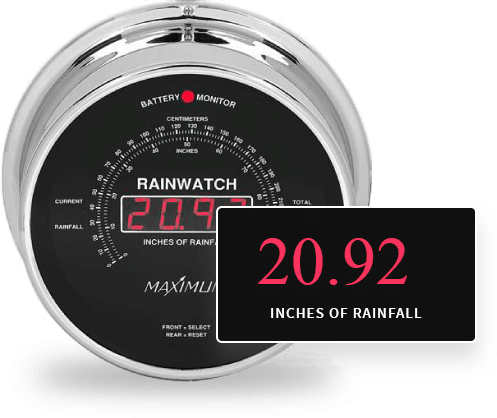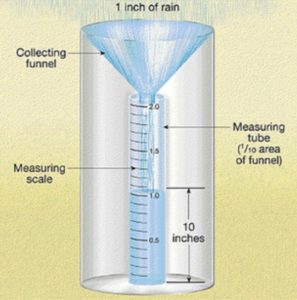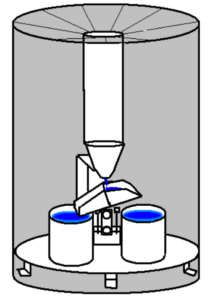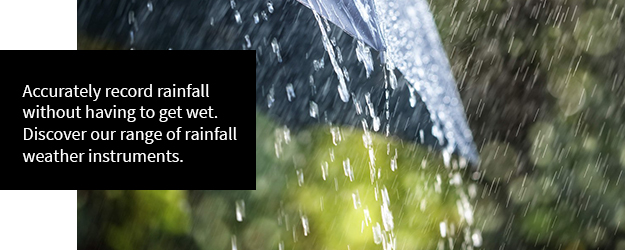What is a Rain Gauge? Types, Use Cases, and Why They Matter

Measuring rainfall can be primarily done in three different ways using three different types of rain gauges. The three major types of rain gauges are the standard gauge, tipping bucket gauge, and weighing gauge. Further distinguishing aspects such as how they are set up and how they deliver data can be made, though the basic operation of rain gauges does not usually vary from these primary rain gauge types. Before discussing the three common types, let’s begin with a quick overview of what a rain gauge is, what they’re made of, which are the most accurate, and more.
What is a Rain Gauge?
A rain gauge is a tool that measures how much rain falls in a certain area over a period of time. It works by collecting rainwater in a container and measuring how much water has accumulated. The measurement is usually given in millimeters.
What is a Rain Gauge Made Out Of?
Rain gauges are commonly constructed from durable materials such as plastic, glass, or metal. Plastic happens to be the most popular choice because of its affordability and resistance to corrosion while glass is preferred for its clarity. Metal gauges are the most sturdiest but can occasionally rust after extended exposure to outdoor elements.
What Diameter Should a Rain Gauge Be and Which is the Most Accurate?
The recommended diameter for a rain gauge is 8 inches. This size is standardized for use by the National Weather Service and is widely adopted worldwide to ensure consistent and accurate measurement of rainfall.
What is a Rain Gauge Used for and Why is Rainfall Monitoring Important?
A rain gauge is a tool that helps us measure how much rain has fallen in a certain area. People like gardeners, farmers, and scientists use it to know how much water plants need, when to water crops, and to study weather patterns. It’s really useful for understanding how much water we have and how we can use it wisely. Let’s take a deeper dive into why rainfall monitoring is important.
Rainfall monitoring is crucial for several reasons:
1. Water Resource Management
Accurate rainfall data is crucial for managing water resources for household, agricultural, and industrial purposes. It also supports the design and operation of irrigation systems and the management of reservoirs and dams.
2. Flood Prevention
Monitoring rainfall allows authorities to forecast and reduce the risk of flooding. This is crucial for protecting lives and properties, particularly in areas susceptible to flooding.
3. Climate Research
Rainfall patterns are key indicators in climate studies. Tracking these patterns over time helps scientists understand changes in the climate and aids in modeling future weather conditions.
4. Agricultural Planning
Farmers rely on rainfall data for planting and harvesting schedules, choosing crop types, and applying irrigation. This information is essential for maximizing crop yield and managing resources efficiently.
5. Drought Assessment
Regular monitoring of rainfall helps identify the early signs of drought, enabling timely responses such as water rationing or the implementation of drought management strategies.
Where is the Best Place to Put a Rain Gauge?
The best place to install a rain gauge is an open area where it can accurately collect rainfall without any obstructions. Here are some key tips for positioning a rain gauge:
- Keep It Away From Obstacles: Ensure the gauge is placed away from trees, buildings, or fences that might block rain or cause overflow from their surfaces.
- Make Sure It’s Leveled: Set up the rain gauge on a flat, level surface to prevent it from tilting and skewing the readings.
- Recommended Height: It’s advisable to mount the rain gauge at least a few feet above the ground to avoid splash-back from the surface but not so high that it’s exposed to wind, which can reduce accuracy. The recommended height for placing a rain gauge is generally no greater than 1.5 meters (or approximately 5 feet) above the ground.
- Open Space: Place the gauge in an open space to minimize any potential wind effects that buildings or other structures could cause.
- Securely Mounted: Make sure the rain gauge is securely mounted so that it doesn’t tip over or move during strong winds or storms.
3 Common Types of Rain Gauges
Let’s look into the three most common types of rain gauges below.
1. The Standard Rain Gauge
The recording of rainfall using the standard or funnel rain gauge is generally done manually. These gauges work by catching the falling rain in a funnel-shaped collector that is attached to a measuring tube. The area of the collector is 10 times that of the tube; thus, the rain gauge works by magnifying the liquid by a factor of 10.
Magnifying the rain in this way allows precise measurements down to a one-hundredth of an inch. Amounts that exceed the tube capacity are caught in the outer shell of the gauge, allowing the recorder to pour out the liquid in the tube and fill it back up if needed.

2. The Tipping Bucket Rain Gauge
The operation of a tipping bucket rain gauge is quite different from the standard gauge. The receiving funnel leads to one of two small buckets. Filling of one bucket occurs at one-hundredth of an inch. The result is a “tipping” of the liquid into the outer shell of the gauge, triggering the second bucket to take its place. The process then repeats itself, allowing for precise measurement of rainfall intensity and amount. This gauge has become standard for wireless weather stations.
 3. The Weighing Rain Gauge
3. The Weighing Rain Gauge
The universal weighing rain gauge is optimal for climatology use. This is because of a vacuum that accounts for the effects of wind, allowing more rain to enter the gauge. These gauges are very precise in measuring rainfall intensity as the weighing mechanism at the bottom of the collector can be used to measure depth and time simultaneously. Recording is carried out much in the same way as the older versions of the tipping bucket gauges.
How Does a Rain Gauge Work on a Home Weather Station?
A rain gauge on a weather station works by collecting and measuring precipitation, typically in the form of rain. Here’s how it operates:
- Collection Funnel: The rain gauge features a funnel-like structure designed to capture raindrops as they fall.
- Measurement Cylinder: Below the funnel, there’s a narrow measuring cylinder or tube that collects the rainwater.
- Measurement Scale: The measuring cylinder has a scale marked with units of measurement, usually inches or millimeters. This scale allows you to read the amount of rain that has fallen.
- Overflow Mechanism: To prevent overflowing during heavy rainfall, some rain gauges are equipped with an overflow mechanism that diverts excess water.
- Recording Data: There are two ways for weather stations to send rainfall data: directly or wirelessly via WiFi. For example, our Rainwatch rainfall instrument can wirelessly send data to a central unit that is placed indoors.
If you are interested in purchasing a rain gauge of your own, take a look through Maximum’s selection of rainfall instruments today. Or, if you have a question for a member of our team, be sure to contact us for more information.


Your explanation of a standard (funnel) gauge should say funnel AREA (not DIAMETER) is 10 times that of the tube. You might mention which types are able to yield rainfall intensity measures-(e.g. in mm)/min as well as ‘cumulative rainfall since last reset’.(mm)
Thank you for this informative article about the different types of rain gauges and how they work. It’s fascinating to learn about the various methods used to measure rainfall accurately. This knowledge provides a deeper understanding of meteorology and the technology behind weather measurement. Your article has certainly increased my appreciation for the precision and innovation involved in tracking rainfall.